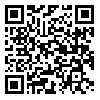Volume 4, Issue 6 (2019)
JCSFA 2019, 4(6): 139-160 |
Back to browse issues page
Download citation:
BibTeX | RIS | EndNote | Medlars | ProCite | Reference Manager | RefWorks
Send citation to:



BibTeX | RIS | EndNote | Medlars | ProCite | Reference Manager | RefWorks
Send citation to:
Upheaval of the Question in Contemporary Poetry - An Instrument to Instill Secondary Outlooks in Iran and Iraq
(Case Study: Nima Yushij and Nazak Al-Malaek). JCSFA 2019; 4 (6) :139-160
URL: http://jcsfa.modares.ac.ir/article-39-57288-en.html
URL: http://jcsfa.modares.ac.ir/article-39-57288-en.html
Abstract: (1903 Views)
Questioning is one of the hallmarks of the New Poem (Contemporary Poetry). The element of the question is common in more themes of the Contemporary Poetry, and in order to understand the thoughts and objectives of the poets, their various questions must be analyzed. In this research, the element of the question in the poems of Iran (Nima) and Iraq (Nazak Al-Malaek) as two representatives of the leading poets of contemporary poetry has been compared. The question in poetry of both poets comes out of its original use and provides an opportunity to express the feelings and views of poets in various social and philosophical themes. The main question of the paper is: how have been different aspects of the thinking and emotions of these poets reflected, using the element of question in poetry? To answer this question, the poetry of these two poets has been studied and analyzed in a descriptive-analytical way with a comparative approach. The poetry of the selected poets is surprisingly similar, especially in choosing a question as a template, to express their thoughts and feelings, such as (death, love, political affiliation, expression of protest and discontent, etc.). The question in Nima and Nazak poetry is a tool for making poetry story, as well as an emphasis on their thoughts and feelings. This emphasis can be seen through the repetition of the question words or the question of allegory, or with two question words in the sentence (only in Nima poetry). The results of this research can be used to improve the techniques of translating and studying these texts in terms of semantics.
Article Type: Original Research |
Received: 2019/05/22 | Accepted: 2019/11/27 | Published: 2020/10/21
Received: 2019/05/22 | Accepted: 2019/11/27 | Published: 2020/10/21
| Rights and permissions | |
 |
This work is licensed under a Creative Commons Attribution-NonCommercial 4.0 International License. |






